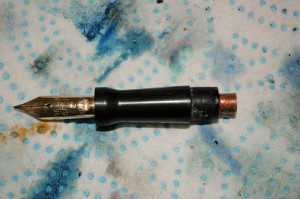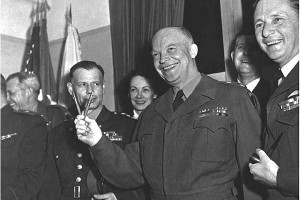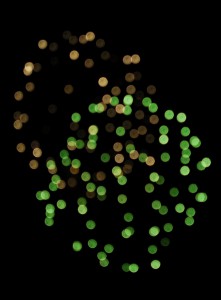Once in a rare while, I find that the section of a pen has lost its nipple to attach an ink sac. Sometimes, an old nipple is just too heavily damaged to patch together or seat a bladder. On the vintage Wahl fountain pen below from the 1920s, the nipple actually was still attached to the remnants of the old ink sac but cleanly detached from the section.

A piece of copper tubing has been fit into a vintage fountain pen section to serve as a nipple, to which you can attach a fresh ink sac.
As Wahl sections from the 1920s aren’t easy replacement parts to find, I find it is best to jury rig a solution. This means it is time for a trip to McDonald’s or the local hardware store.
I have used a variety of objects such as straws (from McDonald’s) to metal pipes over the years. All it needs to be is strong enough to hold a shellacked ink sac.
In this case, the hardware store had a small copper pipe that fit perfectly. Luckily for the pen, the section hole was deep enough to accommodate the inkfeed at proper depth while allowing enough room for the pipe to hold tight. If the feed rested above the hole, then I would have been out of luck.
To get started, use a rotary tool or hacksaw to cut the pipe to the proper length. Use said rotary tool or some heavy sand paper to smooth the newly cut piece. This keeps it from not fitting or from leaving sharp pieces to hurt the ink sac. Remember to keep the replacement nipple fairly short to avoid it coming into contact with the inner pressure bar or spring. If it is too long, it might trap the filling mechanism and not allow you to fill the pen.
Coat the outside of the tube with some rubber cement, before setting it down in the section. This will seal the microscopic gap between the section and tube if you have a good fit. Plus, rubber cement won’t harm the plastic or hard rubber. Nor will it stick so tightly that you cannot remove the new nipple for any reason.
Make sure no rubber cement is clogging the inkfeed channel, preventing you from using the pen you have worked so hard to restore.
After everything is clear, use a little more rubber cement to affix the new ink sac. As long as you keep the pen away from heat, which you should always do anyway, the rubber cement makes for a good seal for the bladder. Until orange shellac became more available to pen collectors in recent years, rubber cement had been the go-to sealant for putting on new ink sacs. As I wasn’t sure how much I could trust the shellac between metal and rubber surfaces, I went with the old standby that I knew I could trust.
Upon completing this. let everything set and dry for 24-hours. Test it with water or ink to make sure the seals are good. If the pen goes for another 24-hours on its side without any leaks in the nipple, section or sac, you are good to go.
If the sac will fill but cannot retain any fluid, then there is an air leak you will need to find and seal. It might be a well hidden hairline crack elsewhere in the section. It also could be a hole in the ink sac, which is unlikely. Mostly it will be a gap somewhere between the section and the new nipple.
Once everything is tested and holding, put the rest of the pen together as you would any other repair job.
SPECIAL REMINDER: DO NOT force a piece of metal tubing into the remaining hole. Metal tubes are stronger than old hard rubber or plastic. It will crack your remaining part if forced into place.. If that happens, it is time to find a new pen to work on. Be careful.


 Shopping Cart
Shopping Cart






